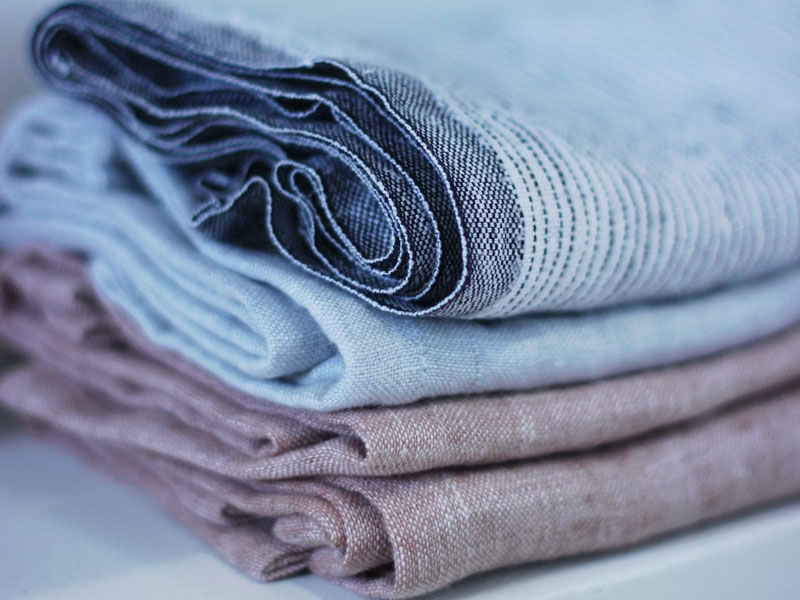Textile fibres
Textile fibres are essential in the fashion and textile industry. They are present in the clothes we wear, but also in the upholstery of the furniture, we use every day, and are even used as insulation.
Some are natural, such as cotton or linen, while others are of synthetic origin, such as polyester and nylon. Each one has its own characteristics, and this makes them more or less suitable for certain uses.
Knowing the different textile fibres that exist will help you to know how to choose the most suitable one.
NATURAL TEXTILE FIBRES
Natural textile fibres of animal origin
The natural textile fibre par excellence is wool, which has been used by humans to make clothing and textiles for thousands of years.
Wool is a thermo-regulating material that helps to maintain body heat while wicking away moisture thanks to its breathable properties. It is also a very hard-wearing fibre that stands the test of time.
Although not widely used in Europe, camel hair is one of the most popular fibres in the Arabian region. It is a fine, soft fibre that is often blended with other natural fibres such as cashmere to produce luxury textiles.
Camel hair is highly insulating and is used especially for making warm garments such as jumpers, jackets, hats and scarves.
Silk is derived from the secretions of the silkworm. The secretion in liquid form hardens and forms the filaments from which the silkworm builds its cocoon to become a butterfly.
In the textile industry, silk is used to produce luxury garments, because the material is quite expensive to obtain.
In addition, there are other natural fibres of animal origin such as cashmere, mohair, angora or alpaca.
Natural textile fibres of vegetable origin
They are obtained from seed hairs, foliage, stems and even shells. The most popular natural textile fibre of plant origin is cotton.It is commonly used in combination with other natural fibres and synthetic fibres to obtain garments and textiles adaptable to different situations. The result is comfortable, soft products with good absorbency.
Other natural plant-based fabrics are gaining in popularity, such as coir, hemp, flax and ramie.
Natural textile fibres of mineral origin
The stretching of some metals such as copper or silver produces metallic fibres that are mainly used in the manufacture of luxury fabrics. The most obvious example is a gold thread.
MAN-MADE TEXTILE FIBRES
Artificial cellulosic fibres
Known as "rayon", these fibres are made from cellulose extracted from the pulp and subjected to different chemical treatments to create strands that are then interwoven together to form rayon yarn.
Artificial protein fibres
They are obtained by spinning masses of proteins previously diluted in chemical agents. Initially, these textile fibres were expected to replace wool, but today they have almost fallen into disuse.
Artificial algae fibres
They are derived from sodium alginate. As it is soluble in water, garments made from rayon alginate can only be dry-cleaned.
Therefore, this material is only used for the production of fancy fabrics, always in combination with other materials. It is also used in the field of surgery because it allows for stitches that can be reabsorbed.
SYNTHETIC TEXTILE FIBRES
Synthetic fibres obtained by polycondensation
They are the most important in today's textile industry. They are obtained from polyesters, which are linear thermoplastic polycondensates formed from a dicarboxylic acid and a dialcohol.
Textile fibres such as lycra, perlon, spandex or elastane are derived from polyurethane. All of them retain their "memory" and always return to their original shape.
Synthetic fibres obtained by polymerisation
The polymerisation is a chemical process that groups monomers together, creating a heavy molecule (polymer). In this process, there are three essential stages: initiation reaction, growth or propagation and rupture or termination.
Acrylic fibres such as acrylan, thermovyl or leacryl, among others, are produced.
Textile fibres are used to create clothing, but they also enable us to create protective materials such as Kevlar, which is resistant to cuts and heat. As well as garments that are especially insulating against the cold.
They play a very important role in our lives, and their uses are becoming more and more specific. Even in synthetic processes, if a responsible use of textile fibres is ensured afterwards, it is possible to make their manufacture as sustainable as possible.



Users Reviews